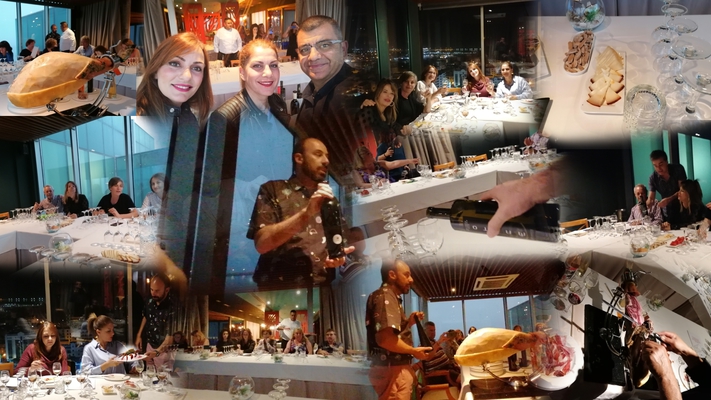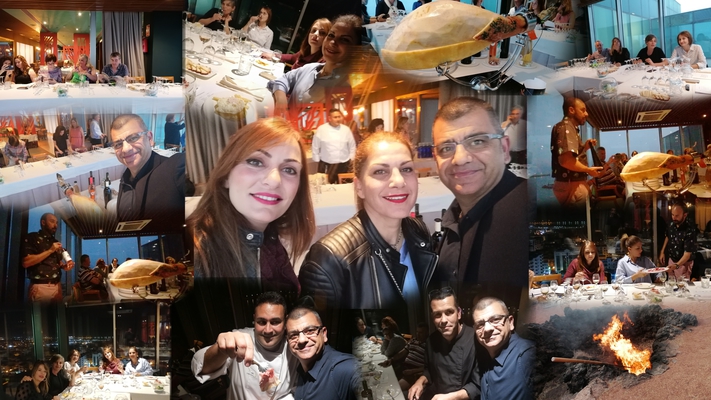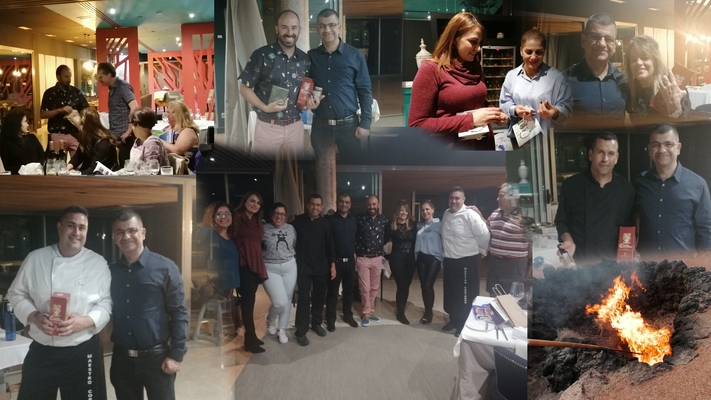Date: Monday, 24/02/2020
Exploring, Filming, Documenting
the
Wine Valley of La Geria
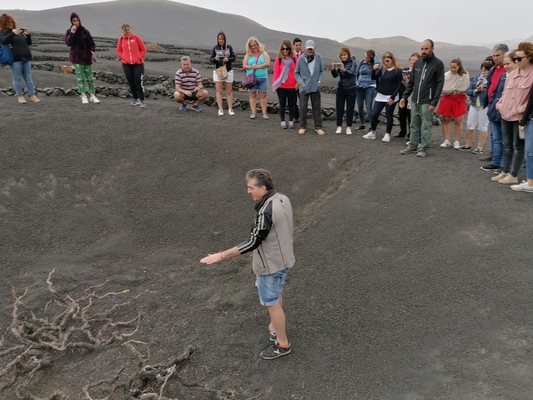
"La Geria refers to a 5255-hectare area in the geographical center of the Canary Island of Lanzarote, on which there is a special type ordered cultivation. It extends approximately between Yaiza and San Bartolomé on the edge of Timanfaya National Park. Mainly used for viticulture, is the nature reserve La Geria the largest vineyard in the Canary Islands.
With the decline of the heavy volcanic ash eruptions in the years 1730-1736 this was an area with massive lapilli layers (called picón) of 1 to 2.5 meters thick. Well, first out of necessity developed a successful, special type of dryland farming.
To return to fertile ground, funnel-shaped pits dug in the lapilli and at their base each set a single plant. The macroporous layer allows the 100 to 200 mm per year is very small, almost entirely covered in winter rainfall quickly seeps into the soil through their roots. At the same time it reduces - in addition to a lateral flow of water and the associated erosion - due to their low thermal conductivity of the capillary action and evaporation losses. In addition to the depression often semi-circular walls of basaltic lava boulders protect the individual against the growing vines sometimes strong winds.
The method proved so effective that most powerful Lapillivorkommen of La Geria mined in small mines and exported to other parts of the island are to be applied to a 10 cm thick artificial mulch on fields that were not affected by the volcanic eruptions . In contrast to the natural region known as La Geria Enarenado this cultivation method is called artificial Enarenado and less than in the wine used in vegetable cultivation. In today this complex process, however, is increasingly uneconomic and the area under cultivation declined.
Sometimes it is also assumed that lapilli body by the intensified cooling of its surface and a hypothetical suction effect at night, more water from the air to the plants are available. In fact, the prevailing trade winds in Lanzarote in general leads to a frequent and abundant dew formation. A relevant advantage of Enarenado surfaces could but in different studies - are not confirmed - in contrast to its inhibitory effect evaporation.
The resulting wine in this lovely area is preferably made from the Moscatel and Malvasia grapes. There are several wineries in the area inviting to degustación, for wine tasting. The oldest winery in the Canary Islands, El Grifo is located near this area. Affiliated to the bodega is the Museo del Vino (Wine Museum).
In the 1960s, the Museum of Modern Art in New York City, this wine-growing area declared a work of art.
The lanzarote African winemakers with the support of strong sunlight on the landscape around five million liters of wine per year "- Source:. Wikipedia
Activity - Exploring, Filming, Documenting the vineyards of La Geria Part 1 of 4
Activity - Exploring, Filming, Documenting the vineyards of La Geria Part 2 of 4
Activity - Exploring, Filming, Documenting the vineyards of La Geria Part 3 of 4
Activity - Exploring, Filming, Documenting the vineyards of La Geria Part 4 of 4
Posters - Exploring, Filming, Documenting the vineyards of La Geria
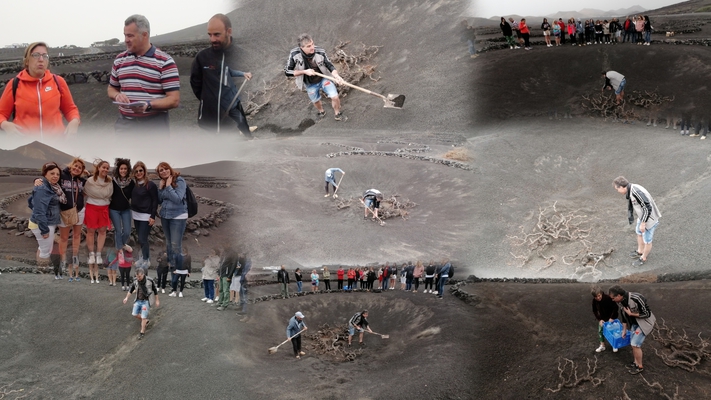
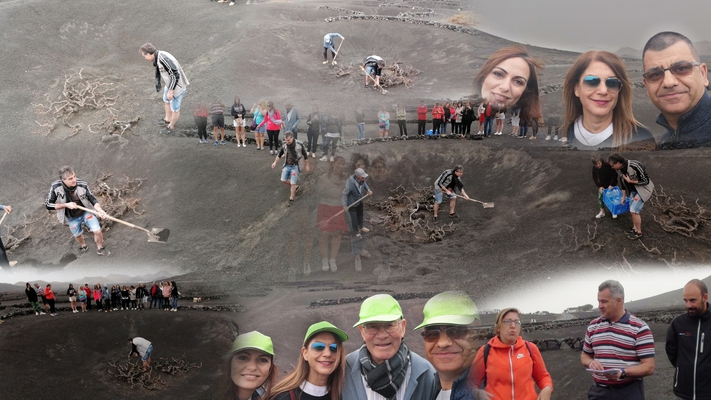
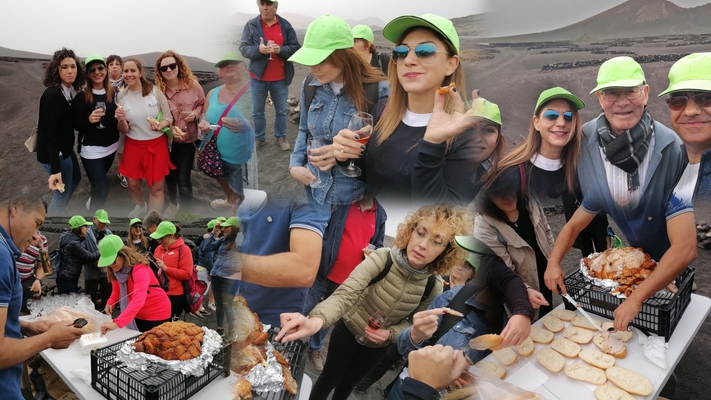
It was an honour for us to meet the legendary Winemaker Mr Jose Delgado from Lanzarote at his 200 years old vineyard.
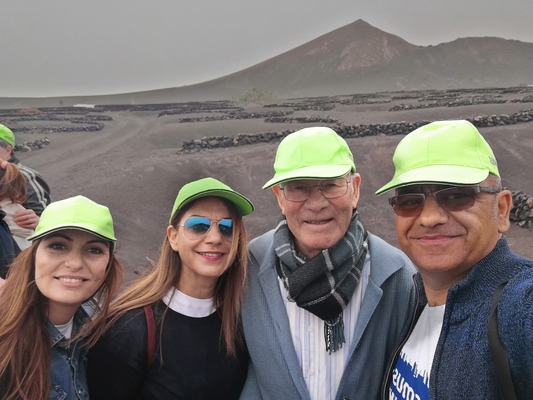
The art of making wine in the Canary Islands
Vega de Yuco is a Canarian bodega brimming with authentic tradition and innovation. Its wines are characterized by their genuine, expressive quality and a personality all of their own.
Our winery, which is certified by the Lanzarote Wines Designation of Origin Regulatory Council, has dedicated more than two decades to balancing longstanding artisan tradition with technology and innovation in order to create a range of wines that, just like the place they are made, are simply out of this world.
Where? Surrounded by Lanzarote´s stunning volcanic landscape on the Lomo de Tese mountainside. Our bodega, is located just 1 km from the village of Masdache in the municipal region of Tías and boasts incredible views across the Volcano Natural Park and Protected Landscape of La Geria. Home is the paradise island of Lanzarote which Canarian artist and sculptor, César Manrique, referred to as, «the most beautiful place on earth ... and I realized that, if others could see it through my eyes, then they would think the same way too».
When? The series of volcanic eruptions that took place in Timanfaya between 1730 and 1736 stripped the region of all fertile land, burying it under a sea of lava and volcanic ash. It was this ash, or lapilli, which gave the island life once more when farmers discovered that it could be used to provide a protective layer that not only preserved moisture, but also protected their crops from the island’s extreme weather conditions. So it was that unique grape varieties like the Malvasía Volcánica came to grow out of Lanzarote’s volcanic ashes.
Who? The winegrowers, heroes who not only sought excellence but found it. Investigating without fear, with courage and with the effort and passion of those who know their environment and respect it. Encountering the entrance that distinguishes and differentiates the extraordinary from what is not. Digging deep holes to get to the fertile soil where to plant the vine. Thus developing the art of making wine. The common thread that connects heaven with earth. The abyss with the summit.
How? Using natural resources and indigenous production and cultivation techniques. Undermining in themselves, in the depths of their hearts while in the bowels of the ground, their land Canaria. Understanding that character, respect and affection of his hands, is the one that would remove with care and passion an extraordinary and singular soil declared a Biosphere Reserve and a Unesco World Geopark.
Than? The Lanzarote grapes with designation of origin (D.O.). The secret of a fruit with name and surname; Pre-phylloxera varieties typical of the island. Strains that give our wines excellence in volcanic Malvasia and the Negro list, predominant in our elaborations, as well as in others such as the Diego and Moscatel grapes. An artisan raw material transformed into a extraordinary wine.
Why? Because the delve deeper into the mystery of own life the wisest nature would discover not only what was there but what might come to be. An inimitable nature phenomenon that would give rise to an exceptional and unique wine heritage; vines, lava and volcanoes. A perfect pairing of dedication, effort and passion.
For what? For the experience to remain still, fixed, immovable in the retina of those who see beyond those who look. Instant this one in which: «wine, landscape and cellar»Mix on the palate, becoming tradition, culture and art.
For whom it is? Only suitable for those who expect the unexpected. For those who discover themselves in such an overwhelming and sublime space. From Robert Louis Stevenson, «[…]elegance on the palate», Passing by Herman Melville who made reference to his,«quality», hasta William Shakespeare, «[…]a wonderfully pungent wine».
But you have to get here and let yourself be conquered, so that we are not always U.S those that we choose, but it is the own wine of Bodegas Vega de Yuco that chooses us.
Source: https://vegadeyuco.com/?lang=en
Activity - Exploring, Filming, Documenting the Vega de Yuco Winery Part 1 of 3
Activity - Exploring, Filming, Documenting the Vega de Yuco Winery Part 2 of 3
Activity - Exploring, Filming, Documenting the Vega de Yuco Winery Part 3 of 3
Posters - Exploring, Filming, Documenting the Vega de Yuco Winery
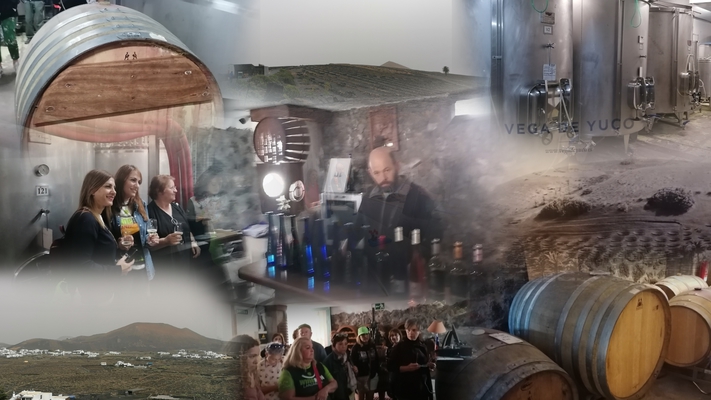
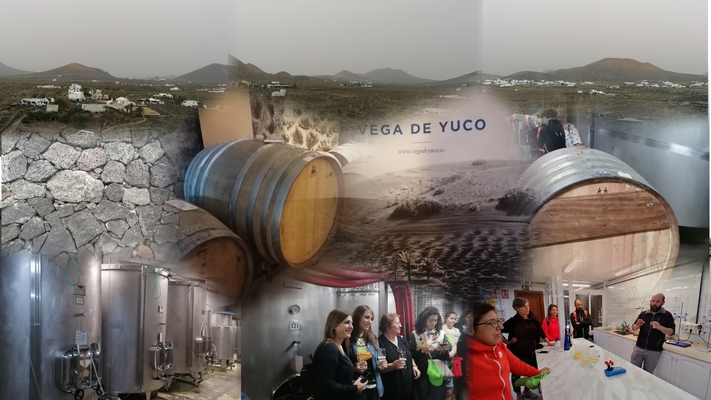
Lunch at Vega de Yuco Winery
Posters - Lunch at Vega de Yuco Winery
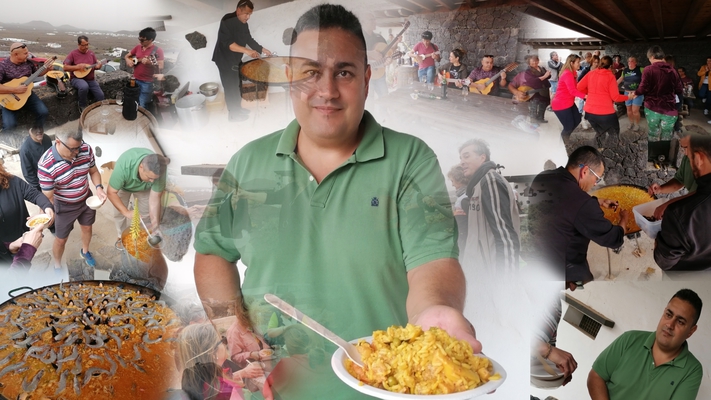
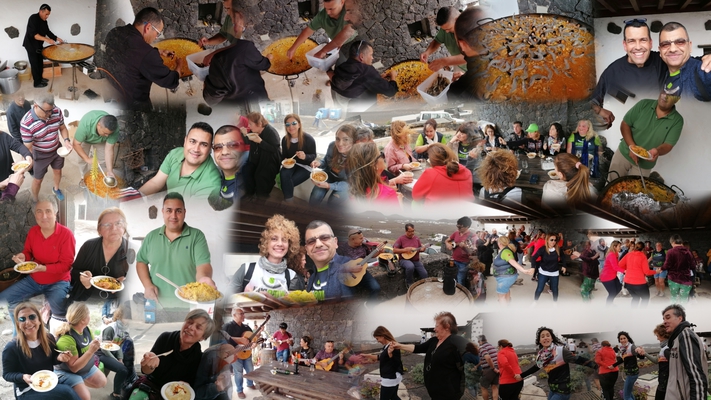
TPM Meeting &
Wine Tasting (Lanzarote Prefiloxérico Wine)
Grape phylloxera (Daktulosphaira vitifoliae (Fitch 1855); family Phylloxeridae, within the order Hemiptera, bugs); originally described in France as Phylloxera vastatrix; equated to the previously described Daktulosphaera vitifoliae, Phylloxera vitifoliae; commonly just called phylloxera (/fɪˈlɒksərə/; from Ancient Greek: φύλλον, leaf, and ξηρός, dry) is a pest of commercial grapevines worldwide, originally native to eastern North America.
These almost microscopic, pale yellow sap-sucking insects, related to aphids, feed on the roots and leaves of grapevines (depending on the phylloxera genetic strain). On Vitis vinifera, the resulting deformations on roots ("nodosities" and "tuberosities") and secondary fungal infections can girdle roots, gradually cutting off the flow of nutrients and water to the vine. Nymphs also form protective galls on the undersides of grapevine leaves of some Vitis species and overwinter under the bark or on the vine roots; these leaf galls are typically only found on the leaves of American vines.
American vine species (such as Vitis labrusca) have evolved to have several natural defenses against phylloxera. The roots of the American vines exude a sticky sap that repels the nymph form by clogging its mouth when it tries to feed from the vine. If the nymph is successful in creating a feeding wound on the root, American vines respond by forming a protective layer of tissue to cover the wound and protect it from secondary bacterial or fungal infections.
Currently there is no cure for phylloxera and unlike other grape diseases such as powdery or downy mildew, there is no chemical control or response. The only successful means of controlling phylloxera has been the grafting of phylloxera-resistant American rootstock (usually hybrid varieties created from the Vitis berlandieri, Vitis riparia and Vitis rupestris species) to more susceptible European vinifera vines.
Source: https://en.wikipedia.org/wiki/Phylloxera
Note: Lanzarote still has a number of very old vineyards with pre-phylloxera grapes.
Lanzarote Prefiloxérico Wine Tasting Part 1 of 2
Lanzarote Prefiloxérico Wine Tasting Part 2 of 2
Posters -Lanzarote Prefiloxérico Wine Tasting
